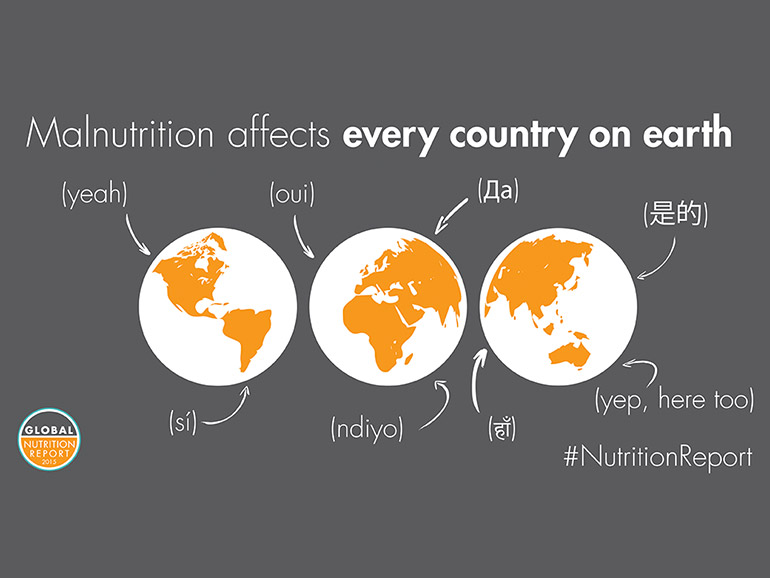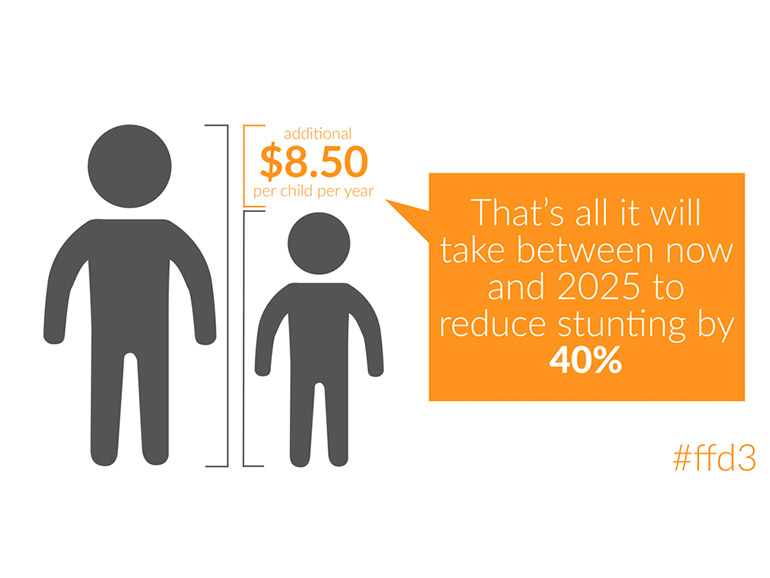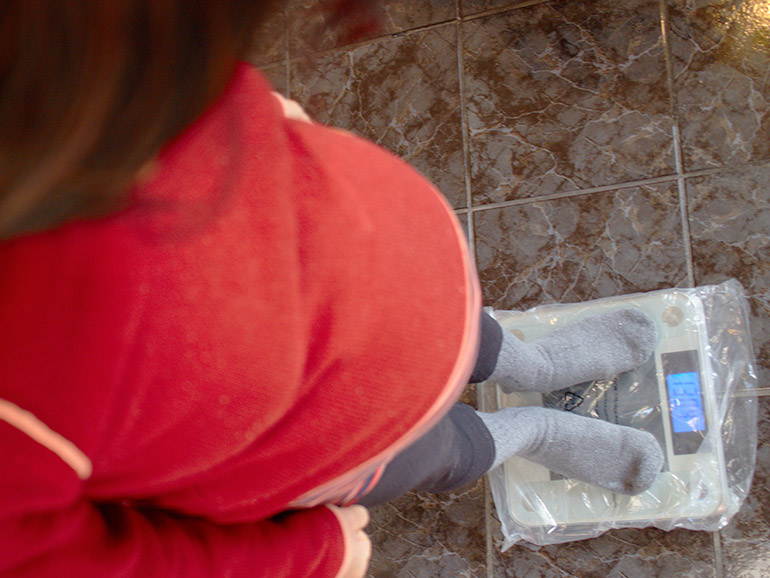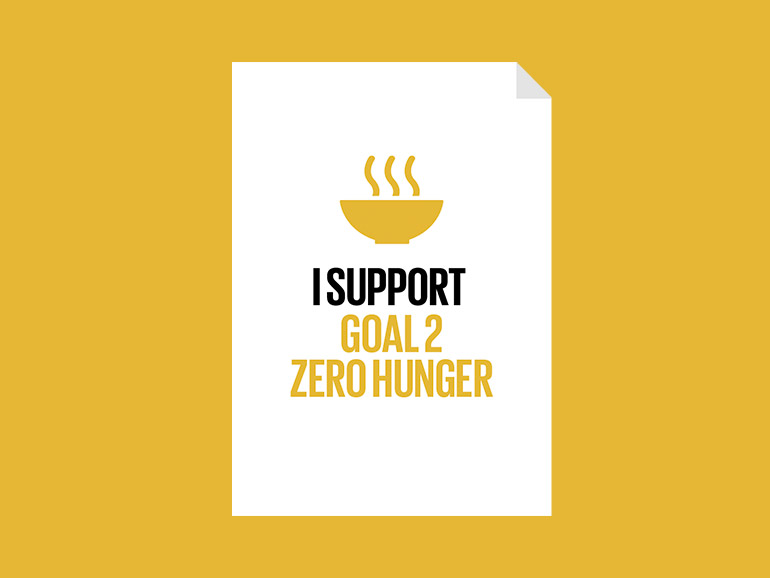Washington, D.C. – 1,000 Days, a leading maternal and early child nutrition advocacy group, is partnering with Heidi Murkoff, author of the worldwide bestselling What to Expect series of pregnancy and parenting books and creator of WhatToExpect.com, to raise awareness in the United States about the critical need for good nutrition in a child’s first 1,000 days.
There is powerful scientific evidence that shows that the right nutrition in the 1,000 days from a woman’s pregnancy through her child’s second birthday sets the foundation for a child’s future health and well-being. The problem is that poor nutrition during this critical 1,000 day window is pervasive throughout the world – including in the U.S. The lack of essential nutrients during pregnancy and in the first two years of life can have a devastating effect on a child’s physical development and brain growth. Poor nutrition during pregnancy and early in a child’s life is also deadly – it is responsible for almost half of all deaths of children under age five and about one out of every five deaths of women during childbirth globally.
This is not, however, just an issue affecting women and children in developing countries. In the United States, a staggering one in four pre-school aged children is overweight, and one in eight is obese. In fact, the United States ranks among the top 10 worst-performing countries in the world on several maternal and child health indicators including rates of exclusive breastfeeding and childhood obesity. Along with skyrocketing rates of obesity in America’s youngest children, poor nutrition is also contributing to an epidemic of diabetes and other chronic and costly health problems. Ensuring that mothers are informed and empowered to properly nourish and care for themselves and their children throughout the 1,000 day window is one of the most powerful ways to prevent these health issues and ensure that children get the best start to life.
Heidi Murkoff and her What to Expect brand have championed healthy eating and feeding for more than 30 years, providing information and resources to pregnant women and new moms. Now, for the first time, What to Expect is teaming up with an organization to raise awareness and advocate on behalf of women and children worldwide. Through this partnership, 1,000 Days and What to Expect hope to get Americans talking about why good nutrition in a child’s first 1,000 days is essential and what can be done to ensure every child, everywhere, has access to the right nutrition, right from the start, to reach their full potential.
“All parents want to give their babies the very best start in life possible – and one of the best ways to do that is to feed them well, even before they’re born,”
says Murkoff, whose series has sold 40 million books worldwide and whose website receives 14 million unique visitors every month. “While it’s never too late for good nutrition, it’s also never too early. The health, well-being and economic success of this nation, and countries around the world, is inherently linked to the nutritional status of our moms and moms-to-be, and our babies and toddlers. It’s time for us, a society that focuses on family values, to truly value families – and to prioritize nourishing the next generation.”
Together 1,000 Days and What to Expect will engage the next generation of moms, advocates and policy makers to ensure women and children everywhere have access to good nutrition.
“When you understand the science behind the 1,000 days and the impact of poor nutrition during this time on babies’ developing bodies and brains, you realize this issue has to start making headlines,” stated Lucy Martinez Sullivan, executive director of 1,000 Days. “1,000 Days could not ask for a better champion than Heidi Murkoff. By working with Heidi and What to Expect we hope to get people to pay more attention to just how vital good nutrition is to ensure a healthy future for every child.”
The announcement coincides with the release of the third edition of What To Expect The First Year.
About Heidi Murkoff and What to Expect®
Heidi Murkoff is the author of the world’s best-selling and parenting series, What to Expect, which began with What to Expect When You’re Expecting and was inspired by her first pregnancy. Dubbed the “pregnancy bible,” the iconic New York Times bestseller (currently over 680 weeks on the list) is now in its all-new fourth edition, with over 18 million copies in print. USA Today named it one of the most influential books of the last 25 years – reporting, too, that it is read by 93 percent of women who read a pregnancy book. The What to Expect books have sold more than 34 million copies in the US alone and are international bestsellers, published in over 30 languages. Heidi is also the creator of WhatToExpect.com, which is home to a close-knit community of more than 14 million moms worldwide, the WTE app, and the founder of the What to Expect Foundation, a nonprofit organization dedicated to helping underserved families expect healthy pregnancies, safe deliveries and healthy, happy babies. In 2013 the What To Expect Foundation joined forces with the USO to create “Special Delivery” – baby showers hosted by Heidi and held at bases all over the world, celebrating and supporting military moms-to-be who are stationed far from their family and friends. In 2011, TIME magazine named Heidi one of the 100 Most Influential People in the World. Heidi and her husband Erik have two children and are the proud grandparents of grandson Lennox who is in his 1,000 day window and made his debut just in time to grace the cover of Heidi’s newest book, the third edition of What To Expect The First Year.












